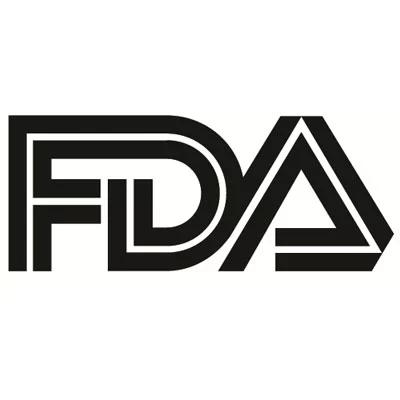Both the FDA and the European Commission recently approved bedaquiline (Sirturo) for the treatment of multi-drug resistant tuberculosis (MDR-TB), as part of a combination therapy, for adults and pediatric patients (5 years and older, weighing at least 15 kg).1 Bedaquiline is a diarylquinoline antimycobacterial drug indicated as part of combination therapy.1
What the Data Showed
The approvals were supported by results from the Phase 3 STREAM Stage 2 study, the first large-scale, randomized, multicountry open-label clinical study to evaluate the efficacy and safety of an all-oral bedaquiline-containing regimen for treatment of MDR-TB. Results confirmed that a bedaquiline-containing regimen offered a significant improvement in outcomes compared to injectable regimens.1 Findings from the study were published in The Lancet.1
Mortality Imbalance in Clinical Trials
Johnson & Johnson noted in its press release that there was an increased risk of death observed in the bedaquiline treatment group (9/79, 11.4%) compared with the placebo group (2/81, 2.5%) in one placebo-controlled trial in adults (Study 1; based on the 120-week visit window). One death occurred during the 24 weeks of administration of bedaquiline. The imbalance in deaths is unexplained. No discernible pattern between death and sputum culture conversion, relapse, sensitivity to other drugs used to treat tuberculosis, HIV status, or severity of disease could be observed. In a subsequent active-controlled trial in adults (Study 4), deaths by Week 132 occurred in 11/211 (5.2%) patients in the 40-week bedaquiline treatment group, 8/202 (4%) patients in the active-control treatment group including four of 29 patients who received bedaquiline as part of a salvage treatment, and 2/143 (1.4%) patients in the 28-week bedaquiline treatment group.1
What You Need to Know
Bedaquiline was approved by the FDA and the European Commission for treating multi-drug resistant tuberculosis (MDR-TB) in adults and children aged 5 and older based on Phase 3 STREAM Stage 2 study findings.
The World Health Organization estimates that 410,000 people developed MDR or rifampicin-resistant TB in 2022. The treatment success rate for MDR-TB has improved but remains low at 63% as of 2020.
Initially approved for adults in 2012, bedaquiline has gradually expanded its approval to younger age groups. Most recently, the FDA approved it for children as young as 5 years old, with specific pediatric formulations to accommodate those who cannot swallow tablets.
MDR TB Burden
According to the World Health Organization (WHO), in 2022, there was estimated 410,000 people (95% UI: 370,000–450000) developed multidrug- or rifampicin-resistant tuberculosis (MDR/rifampicin-resistant (RR)-TB). The treatment success rate for people diagnosed with MDR/RR-TB has steadily improved, but it remains alarmingly low. In 2020, the treatment success rate was 63%, up from 60% in 2019 and 50% in 2012.2
Treating MDR/RR-TB is challenging and continues to be an ongoing, emerging infection, according to the WHO. Most people with TB are cured by a 6-month treatment regimen that is provided to patients with adequate support. Inappropriate or incorrect use of TB drugs, use of ineffective formulations of drugs (such as the use of single drugs, poor quality medicines or bad storage conditions), and premature treatment interruption can cause drug resistance, which can then be transmitted, especially in crowded settings such as prisons and hospitals.2
And there is a marked difference in how TB is treated in the US and Europe vs low-and-middle-income countries (LMIC).
Tuberculosis Burden in LMIC
“In the US and Europe, we have managed to get TB somewhat under control,” said Michael W. Dunne MD, FIDSA chief medical officer, head of development, Bill & Melinda Gates Medical Research Institute, said in a previous interview with Contagion. “The burden of TB in the developed world has significantly reduced over time because we have good preventive measures, good treatment regimens, that can be monitored here. And that is the important point…it is more difficult to do that in the rest of the world.”3
Dunne points out this is the crux of the issue and the ability to care for patients continuously over the many months it takes to cure a patient with TB. “How do we make it easier for low-and-middle-income countries to be able to get a handle on TB?”3
Within the US, not only has there been a great emphasis on TB care, but the cases of TB being reported are different. More than 80% of TB cases in the US are associated with latent TB infections (LTBI) says the CDC. With LTBI, patients are treated with shorter medication regimens that are 3-4 months, as opposed to those with active TB who need to be on medications for 6 months. Innovation is another factor that differs in the US. For example, the CDC recommended video-directly observed therapy (vDOT) to conserve time and costs for some patients and TB programs.3
Other Approvals
In 2020, the FDA approved bedaquiline for use in combination therapy for the treatment of patients 5 years and older with pulmonary multi-drug resistant tuberculosis. 4 The drug can be administered with a 20-mg tablet taken conventionally or mixed into water for pediatric patients who have difficulty swallowing an intact tablet.4
The FDA approval was also supported by evidence from a single-arm, open-label, phase 2 study that enrolled pediatric patients between the ages of 5-12 years with confirmed or likely pulmonary multidrug resistant TB. Patients were treated with half of the adult dose with 20 mg tablets for 24 weeks alongside a background regimen for treatment.4
Bedaquiline received its first approval in 2012, for adult patients. In 2019, bedaquiline was approved for adolescents between ages 12-17 years.4

